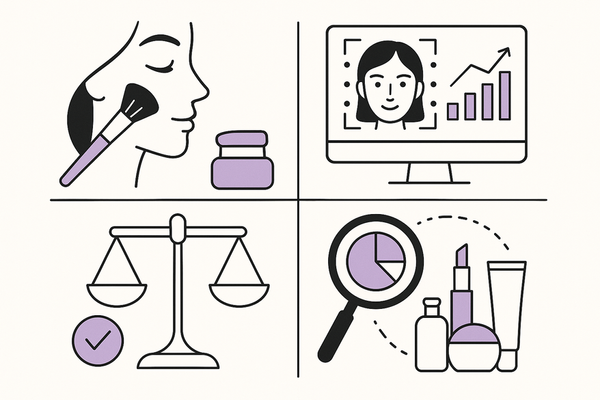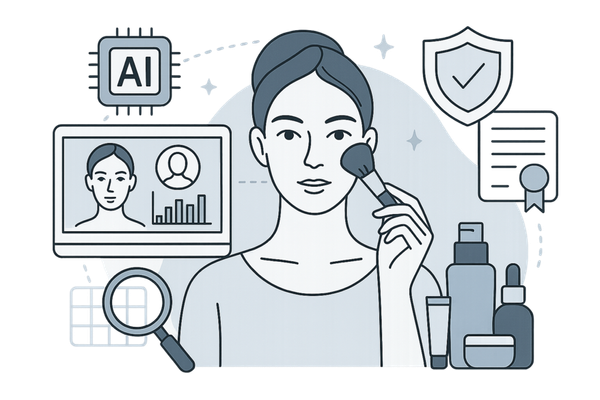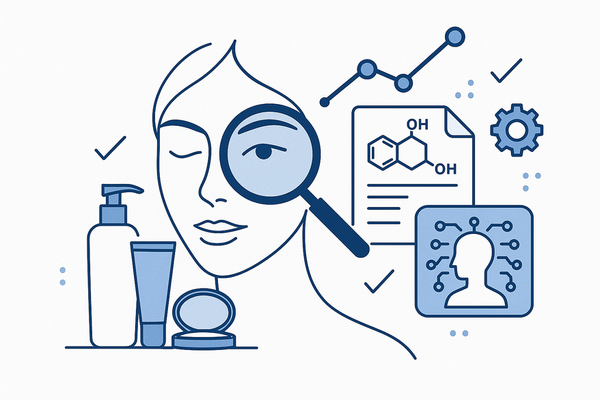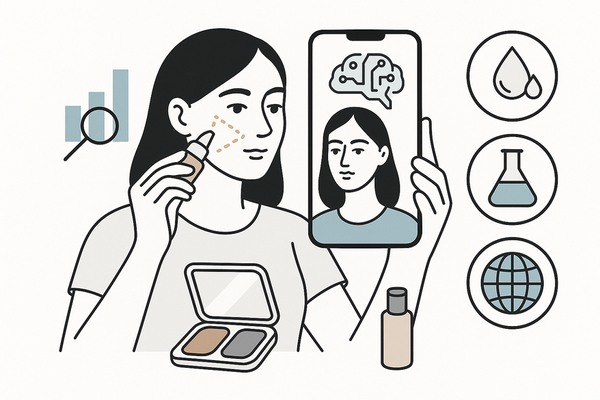Protecting Personal Makeup Data in the Age of AI Makeup Generators
Protecting personal makeup data is crucial as AI makeup generators evolve, offering personalized beauty experiences while ensuring data privacy and security.
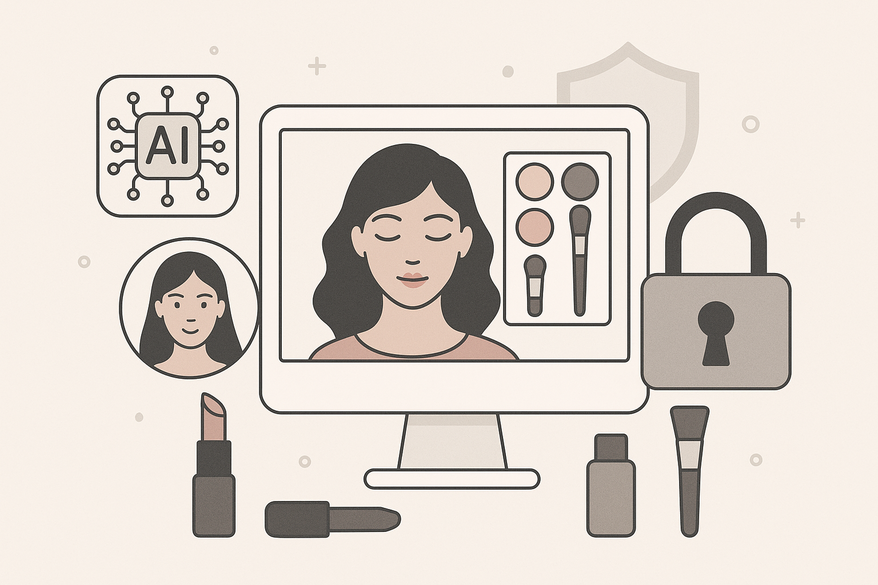
Estimated reading time: 7 minutes
Key Takeaways
- Personal makeup data encompasses facial images, skin profiles, purchase histories, lifestyle details, and even genetic markers.
- AI makeup generators employ image recognition, AR overlays, and recommendation engines for hyper-personalized virtual try-ons.
- Privacy risks include data breaches, unauthorized sharing with third parties, and misuse of biometric information.
- Users can safeguard their information with strong authentication, privacy-policy diligence, data minimization, and careful permission control.
- Developers must enforce robust encryption, secure storage, regular security audits, transparent data policies, and privacy-first training.
Table of Contents
- Introduction
- Understanding Personal Makeup Data
- Overview of AI Makeup Generators
- Risks and Privacy Concerns
- Best Practices for Users
- Developer Responsibilities
- Balancing Innovation and Data Security
- Conclusion
Introduction
Protecting personal makeup data has never been more critical as brands embrace AI-driven personalization. From virtual lipstick try-ons to foundation matches, these tools collect intimate details about our appearance and routines. While innovation enhances the beauty experience, it demands a rigorous focus on data privacy. Source: Consumer Data Privacy in the Age of Personalized Beauty.
Understanding Personal Makeup Data
Personal makeup data refers to any information beauty apps gather to tailor your experience. Key data types include:
- User-uploaded facial images for virtual try-ons and look analysis
- Skin tone, type, and specific concerns via quizzes or algorithmic assessment
- Purchase history, favorite products, and detailed beauty routines
- Lifestyle details—sleep patterns, diet—and, in advanced cases, genetic markers
These insights drive hyper-personalized recommendations but also reveal sensitive aspects of appearance and health—making robust privacy measures essential.
Overview of AI Makeup Generators
AI makeup generators harness machine learning and computer vision to analyze your face and suggest or apply virtual cosmetics in real time. Core technologies include:
- Image recognition and facial feature detection to pinpoint eyes, lips, and skin areas
- Augmented reality (AR) overlays for seamless try-ons
- Recommendation engines trained on demographic data and user preferences
Data Inputs and Outputs
Inputs:
- Selfies or webcam captures of your face
- Metadata such as age, gender, and skin tone
- User-defined preferences (product types, style inclinations)
Outputs:
- Simulated makeup looks—lipstick shades, eyeshadow palettes, foundation matches
- Tailored product recommendations and shopping links
- Color analytics and style tips based on facial features
Benefits:
- Boosts confidence by visualizing products before purchase
- Increases engagement with interactive virtual try-ons
- Streamlines shopping through data-driven insights
However, these apps handle highly sensitive personal makeup data that must be secured at every step.
For example, Makeup Check AI offers advanced personalization while giving users full control to access or delete their data at any time.
Risks and Privacy Concerns
Beauty apps face several threats when managing personal makeup data:
- Data breaches exposing facial images and personal attributes
- Unauthorized sharing with advertisers or third-party brokers
- Misuse of biometric data—face maps and feature points—for identity theft or surveillance
Concrete Scenarios
- A breach in a popular virtual try-on app leaks thousands of user photos, later sold on the dark web.
- An advertiser exploits skin-concern profiles to deliver invasive ads without explicit consent.
- Facial recognition data is repurposed for tracking or deepfake identity scams.
Consequences range from financial fraud and reputational damage to targeted phishing attacks. Users may lose trust in beauty-tech if these vulnerabilities remain unaddressed. For more, see AI Beauty App Privacy Concerns and general insights on data privacy.
Best Practices for Users
Take control of your privacy in beauty apps by adopting these habits:
- Strong Authentication
- Create unique, complex passwords for each app
- Enable multi-factor authentication (MFA) whenever available
- Privacy Policy Diligence
- Read how the app collects, uses, and shares data before signing up
- Opt out of non-essential data collection if possible
- Data Minimization
- Upload only required images for virtual try-ons
- Skip quizzes requesting sensitive lifestyle or health details
- App Permissions
- Review camera, microphone, and photo-library access in device settings
- Revoke non-critical permissions
- Platform Selection
- Choose brands advertising end-to-end encryption and strong security
- Look for transparent data-usage statements and third-party certifications
Learn more in Three Ways to Protect Customers’ Privacy in a Beauty Tech World.
Developer Responsibilities
When building AI makeup generator tools, developers must embed privacy at every level:
- Robust Encryption
- Encrypt data at rest with AES-256 or equivalent
- Secure data in transit using TLS 1.2+ protocols
- Secure Data Storage
- Isolate databases for user images and profiles
- Apply regular patching and vulnerability updates
- Enforce least-privilege access controls
- Regular Security Audits
- Conduct penetration tests at least twice per year
- Perform vulnerability assessments after major updates
- Transparent Data Policies
- Publish clear, user-friendly privacy statements
- Detail the data lifecycle: collection, storage, retention, and sharing
- Employee Training
- Foster a privacy-first culture among staff
- Provide ongoing secure-coding and data-handling workshops
For a deeper guide, see Makeup App Data Security.
Balancing Innovation and Data Security
- Privacy by Design
- Integrate anonymization or pseudonymization from project inception
- Limit storage of raw images; use derived feature data where possible
- Compliance Frameworks
- Align with GDPR, CCPA, and ISO/IEC 27001 standards
- Pursue relevant certifications to demonstrate commitment
- User Control Features
- Allow users to export or delete their personal makeup data on demand
- Provide dashboards showing stored data and purposes
- Transparent Communication
- Notify users when new features require extra data
- Obtain explicit consent for expanded data usage
- Future Roadmap: On-Device AI
- Shift image processing to user devices to minimize cloud transmission
- Explore federated learning models for secure, distributed training
Brands can maintain rapid innovation while securing user trust. Discover more about the personalization-data privacy balance.
Conclusion
Protecting personal makeup data is vital as AI makeup generators evolve. Users should adopt strong passwords, enable MFA, read privacy policies carefully, limit data sharing, and choose apps with clear security measures. Developers must encrypt data, conduct regular audits, embed privacy by design, and communicate transparently. As one expert notes:
Privacy by design is not an option—it’s a necessity.
Together, we can embrace AI-driven beauty safely and confidently.
FAQ
What constitutes personal makeup data?
Personal makeup data includes anything from selfies and facial landmarks to skin-type information, routine history, and even lifestyle or genetic details collected by beauty apps.
How can I secure my data when using virtual try-on tools?
Use unique, strong passwords; enable multi-factor authentication; review app permissions; opt out of unnecessary data collection; and choose platforms with transparent privacy policies.
What responsibilities do developers have for protecting user privacy?
Developers must implement robust encryption, secure data storage, regular security audits, clear privacy statements, and ongoing employee training to ensure every aspect of the tool respects user privacy.

